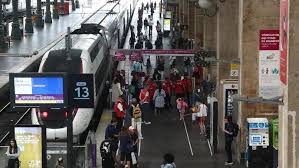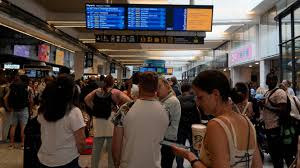Boeing’s Starliner space capsule was set for its inaugural test flight with NASA astronauts, including Indian-origin Sunita Williams, on board. However, the launch was automatically halted mere minutes before liftoff due to a computer abort system, marking another indefinite delay for the project. This article delves into the events surrounding the halt, the history of the Starliner program, and the future prospects for Boeing’s ambitious space venture.
The Launch That Almost Was
Countdown to Launch
The anticipation was palpable as the countdown to launch reached its final stages. The ground system computer, responsible for coordinating the last moments before liftoff, was meticulously managing the sequence. With just three minutes and 50 seconds left on the clock, the automatic abort was triggered, stopping the launch sequence abruptly.
Immediate Aftermath
Following the abort, officials confirmed that the Starliner capsule itself appeared to be in good condition. The decision to halt was a precautionary measure, underscoring the critical importance of safety in space missions.
History of Challenges
Early Setbacks
Boeing’s journey with the Starliner has been fraught with challenges. The first attempt to send an uncrewed Starliner to the ISS in 2019 failed due to software and engineering problems. This initial setback cast a shadow over the program, but Boeing persevered.
Progress in 2022
A second attempt in 2022 succeeded, setting the stage for the first crewed test mission. This success was a significant milestone, demonstrating Boeing’s capability to address and overcome previous issues.
Technical Hurdles
The latest postponement is part of a series of last-minute technical issues that teams had been working through. Previous delays, including a faulty pressure valve and various engineering issues, have already pushed the timeline back significantly. Each challenge has required thorough investigation and resolution to ensure the safety and reliability of the spacecraft.
Insights from NASA and ULA
Statements from NASA
“We got really close today,” said Steve Stich, manager of NASA’s commercial crew program, as quoted by news agency Reuters. “I know it’s a little disappointing, we were all excited. This is kind of the way spaceflight is.” Stich’s comments highlight the inherent uncertainties and complexities of space missions.
Perspective from ULA
Tory Bruno, CEO of United Launch Alliance (ULA), the joint venture between Boeing and Lockheed Martin that owns the Atlas V rocket, suggested that the issue could be a hardware malfunction or a network communication problem between the three computers managing the automated launch systems. This insight points to the intricate technological interdependencies involved in launching a spacecraft.
Boeing’s Hopes and Aspirations
The Crew: Barry Wilmore and Sunita Williams
NASA astronauts Barry “Butch” Wilmore and Sunita “Suni” Williams were strapped into their seats for several hours before the mission was halted. Technicians safely assisted them out of the capsule, and they were returned to quarantine to await the next launch attempt. The astronauts’ preparedness and resilience are crucial for the mission’s success.
Mission Significance
This mission is critical for Boeing, as it aims to establish the Starliner as a reliable option for ferrying astronauts to the ISS and beyond, competing against SpaceX’s Crew Dragon missions. Success with the Starliner is crucial for Boeing, not only for its space ventures but also to recover from crises in its commercial airplane manufacturing operations.
Financial and Strategic Implications
Contract and Budget
The Starliner program, under a $4.2 billion contract with NASA, has seen its budget swell to around $4.5 billion due to various setbacks. These financial overruns reflect the complexities and challenges inherent in developing cutting-edge space technology.
NASA’s Strategic Interests
For NASA, the Starliner is a key component of its strategy to diversify its astronaut transport options. This diversification is crucial for NASA’s broader Artemis program, aimed at returning humans to the Moon and eventually to Mars. The ability to choose between multiple reliable transport options enhances mission flexibility and resilience.
Future Prospects for Starliner
Upcoming Launch Windows
Initially, NASA and Boeing planned for a potential launch window today. However, NASA decided against it, stating that additional time was needed to assess the issue thoroughly. The next available windows are June 5 and June 6. These windows provide opportunities to resolve technical issues and ensure mission readiness.
Long-Term Vision
The long-term vision for the Starliner program extends beyond the ISS. Boeing envisions the Starliner playing a pivotal role in future space exploration missions, including lunar and Mars missions. The experiences and lessons learned from current challenges will inform and strengthen future endeavors.
Boeing’s Starliner space capsule has faced yet another setback with the recent launch halt due to a computer abort system. This delay is part of a series of challenges that have marked the program’s journey. Despite these hurdles, Boeing remains committed to establishing the Starliner as a reliable option for NASA’s space missions. With the next launch windows approaching, the team is focused on addressing the issues and ensuring a successful mission. The Starliner program’s success is vital not only for Boeing’s space ambitions but also for the broader goals of NASA’s Artemis program.








